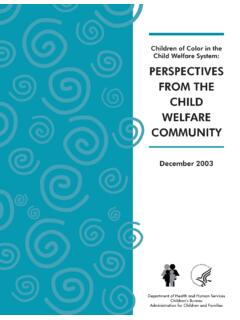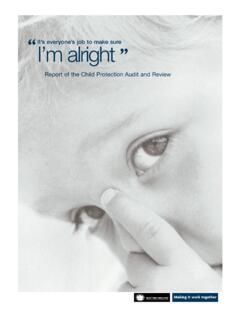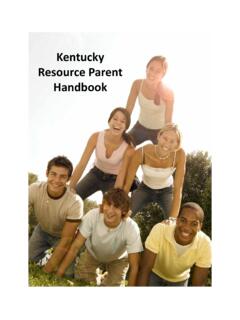Transcription of PROTECTIVE FACTORS FOR SURVIVORS OF DOMESTIC …
1 PROTECTIVE FACTORS FOR SURVIVORS OF DOMESTIC VIOLENCEISSUE BRIEFPROTECTIVE FACTORS FOR SURVIVORS OF DOMESTIC VIOLENCE1 PROTECTIVE FACTORS for SURVIVORS of DOMESTIC violence (DV) are an essential component of the Risk and PROTECTIVE FACTORS Framework of the Adult & child Survivor-Centered Approach (the Approach) developed by the Quality Improvement Center on DOMESTIC Violence in child welfare . This brief provides guidance for child welfare , DOMESTIC violence programs that serve both SURVIVORS and offenders, courts, and other collaborative partners about building PROTECTIVE FACTORS that studies show lessen the impact of DV on both child and adult SURVIVORS and promote their safety, healing, and violence (DV) PROTECTIVE FACTORS are individual and relational attributes, as well as environmental and social conditions, that help to reduce the impact of DV risk FACTORS , build individual strengths, promote healthy development, and establish conditions that support the safety, healing, and well-being of both adult and child SURVIVORS of DOMESTIC environment of on-going violence and coercive control can make it more difficult to reinforce or build adult and child SURVIVORS PROTECTIVE FACTORS because the person who uses DOMESTIC violence often directly or indirectly undermines their relationships, access to resources, and sense of self-worth, as well as the adult survivor s parenting role.
2 The impact of trauma can further complicate matters, as a survivor may be experiencing reduced energy, have emotional outbursts, appear to be disengaged, or suffer other effects that make it difficult for practitioners to identify or strengthen PROTECTIVE FACTORS . Social conditions such as poverty, racism and other forms of oppression, as well as cultural expectations that ISSUE BRIEFQIC-DVCW2 PROTECTIVE FACTORS for SURVIVORS of DOMESTIC Violence Feb 2019 SOCIAL AND EMOTIONAL ABILITIES NURTURING PARENT- child INTERACTIONSRESILIENCE AND A GROWTH MINDSETSAFER AND MORE STABLE CONDITIONS SOCIAL, CULTURAL, AND SPIRITUAL CONNECTIONSTHE FIVE INTERRELATED DV PROTECTIVE FACTORS perpetuate gender norms can reinforce a DV offender s efforts to undermine SURVIVORS . Yet, PROTECTIVE FACTORS can be strengthened even under adverse circumstances, and growth in any one of the PROTECTIVE FACTORS can be the foundation for growth in others. DOMESTIC violence and child welfare practitioners play a direct role in these efforts, as well as SURVIVORS themselves and their family members, friends, and communities.
3 Thus, it is important for practitioners to consider the contexts of adult and child SURVIVORS lives, circumstances, experiences, strengths, and needs in order to understand and appreciate the multiple pathways for reinforcing, building, and sustaining PROTECTIVE FACTORS , and helping to facilitate SURVIVORS journeys to safety, healing, and document provides a brief description of each DV PROTECTIVE factor and examples of how DOMESTIC violence and child welfare practitioners and their collaborative partners can help to promote each factor. While each person and system may play a different role in these efforts, operating from a common understanding of the importance of these PROTECTIVE FACTORS to both child and adult SURVIVORS can align practices, plans, and programming in ways that are mutually reinforcing and therefore generate even greater impact. Practice examples are not meant as a guide or prescription for best practice.
4 The information provided in this document is intended to serve as a quick reference to this key element of the Adult & child Survivor-Centered Approach. A more detailed explanation of the DV Risk and PROTECTIVE FACTORS Framework can be found in the description of the Approach; an extensive summary of relevant research is forthcoming. Reference to SURVIVORS in the practice examples pertain to both child and adult SURVIVORS , unless explicitly FACTORS for SURVIVORS of DOMESTIC Violence Feb 2019 ACKNOWLEDGMENTSThe Quality Improvement Center on DOMESTIC Violence in child welfare (QIC-DVCW) gratefully acknowledges the groundbreaking work of the primary developers of the DOMESTIC violence PROTECTIVE FACTORS , and authors of this brief: Charlyn Harper Browne, , Center for the Study of Social Policy, and Tien Ung, , Center on the Developing child at Harvard University. Many other people have contributed to this brief from the first meeting about the conceptual framework to the final product.
5 In addition to the authors, the QIC-DVCW would like to thank Kathy Savage Mills, Renee Boynton-Jarrett, Lisa Goodman, Sherry Hamby, Kate Lessard, Fernando Mederos, Sandra Salmon, Kristen Selleck, Isa Woldeguiorguis, Juliana Carlson, Becci Akin and Eryn Branch for their expertise and contributions in the early stages of this work. Finally, thanks to Julie Fliss and Jean Blankenship at the Children s Bureau for their leadership, support and guidance throughout the development process. SAFER AND MORE STABLE CONDITIONS Experiencing safer and more stable conditions while in an abusive relationship, planning to leave, or after leaving are essential for buffering the negative effects of DOMESTIC violence, healing from the impact of DV and co-occurring child maltreatment, and promoting healthy development and well-being for adult and child SURVIVORS . In this context, safer conditions are those in which there is a lower risk of physical, sexual, or emotional fear and harm such as threats, intimidation, humiliation, stalking, economic oppression, coercion, and isolation in one s physical and social environments and relationships.
6 Consistent and predictable experiences of safety and stability promote healthy development and well-being for adult and child , safer conditions are not absolute, and the degree of safety that can be achieved is influenced by many FACTORS . Safer options for one family may not be feasible for another family. SURVIVORS personal histories, cultural norms, and adverse experiences including systemic oppression influence how safety is perceived, understood, and experienced. The type, availability, accessibility, and manner in which support, help, and resources are offered is another major determinant of safety and stability. The level and types of risk faced by SURVIVORS can also vary as circumstances change and the DV offender reacts or responds to maintain control, or modifies their behavior in positive ways. Thus, it is essential for SURVIVORS , DOMESTIC violence and child welfare practitioners, and their collaborative partners to engage in ongoing discussions regarding the SURVIVORS perspectives and rights, safety options and obstacles, and access to community resources.
7 The goal is to ensure that adult and child SURVIVORS safer conditions do not provide just a temporary respite but longer-term stability. Achieving more stable conditions enhances and sustains safety. Stable conditions refer to predictable and consistent positive experiences in one s physical and social environments and relationships. Examples may include housing, employment, finances, transportation, child care, education, and interpersonal interactions. Unstable conditions such as experiencing DV or losing a job can negatively affect adult and child SURVIVORS choices, decision-making, problem-solving, sense of security, self-efficacy, social interactions, emotional responses, parenting skills, and access to help. Stable conditions can help to buffer the impact of stressful and traumatic experiences on adult and child SURVIVORS , and to increase adults sense of control over their lives and what happens to their that are designed to increase the degree of safety and lessen the potential for harm must be flexible and individualized to address adult and child SURVIVORS unique circumstances and needs, and make use of their FACTORS for SURVIVORS of DOMESTIC Violence Feb 2019 Promoting Safer and More Stable Conditions with Adult and child SURVIVORS of DVBelow are examples of how DOMESTIC violence and child welfare practitioners, and their collaborative partners, can help to promote safer and more stable conditions with adult and child SURVIVORS of DOMESTIC violence who are involved in the child welfare system.
8 Examples include: Discussing and thinking critically with adult SURVIVORS about what is safe given their unique circumstances, strengths, and needs; success or difficulties from past strategies; and risks associated with maintaining or ending relationships with intimate partners. Creating flexible and non-prescriptive safety plans in partnership with adult and child SURVIVORS . Including supportive family members as part of safety plans, when appropriate. Revisiting and refining safety plans as circumstances change. Attending to housing, legal, economic, employment, nutritional, and health challenges. Advocating with child care centers and schools to maintain consistency in a child s/youth s environment. Identifying significant stressors in the lives of children and their parents. Helping SURVIVORS secure resources to address stressors. Ensuring equitable and meaningful referral and access to needed resources, services, and opportunities.
9 Making all reasonable efforts to identify and implement supports to safely maintain children in the care of their parents or caregivers, especially the adult survivor. Intentionally assessing and proactively addressing conditions ( , community context, organizational policies, and institutional and interpersonal biases) that create disproportionate responses to families of color. Finding ways for children in care to maintain connections and relationships ( , using kinship care; maintaining school or after-school programming; keeping the same doctors and dentists; passing on contact information so children will be invited to birthday parties from their school friends; going to the same parks and playgrounds when possible). Working with the SURVIVORS to understand how to safely and effectively engage and hold accountable the person using violence and coercive control to help them change their FACTORS for SURVIVORS of DOMESTIC Violence Feb 2019 SOCIAL, CULTURAL, AND SPIRITUAL CONNECTIONSA dult and child SURVIVORS healthy and constructive relationships positively impact their healing and well-being.
10 Social, cultural, and spiritual connections for SURVIVORS of DOMESTIC violence refer to sustained relationships with people, institutions, a community, or a higher power that promote a sense of connectedness and positive identity which results in feelings of trust, belonging, faith, hope, and a belief that one matters. Social, cultural, and spiritual connections are valuable resources for adult and child SURVIVORS because they can provide: Concrete support: physical and mental health services, restraining orders, safe housing, transportation, financial assistance, links to jobs, etc. Affiliative support: friendship, companionship, connectedness with others who share similar circumstances, etc. Emotional support: non-judgmental advice, empathy, validation of self-worth, etc. Informational support: parenting guidance, recommendations for health care services or child care and education, etc. Cultural support: shared identity, norms, traditions, a sense of community, and ways of understanding the world, etc.




